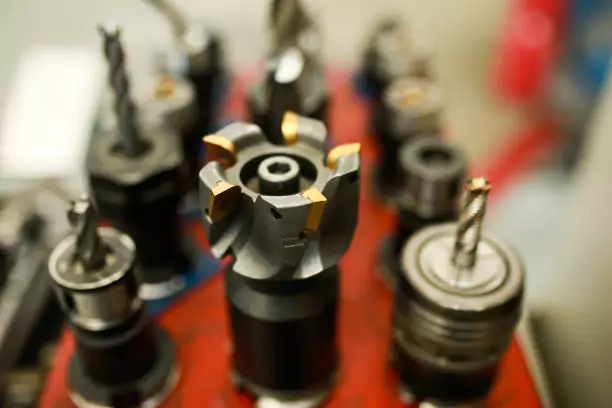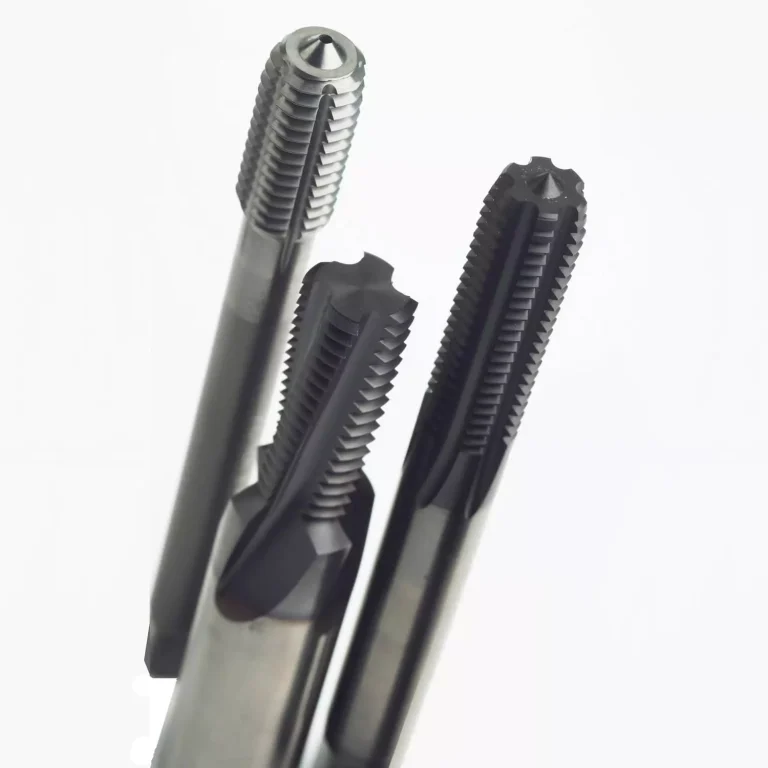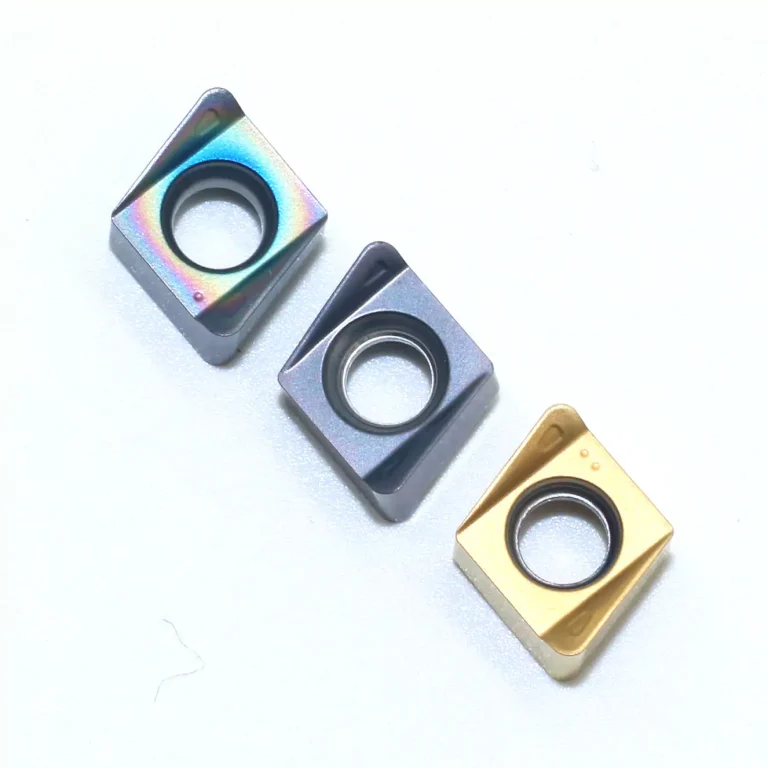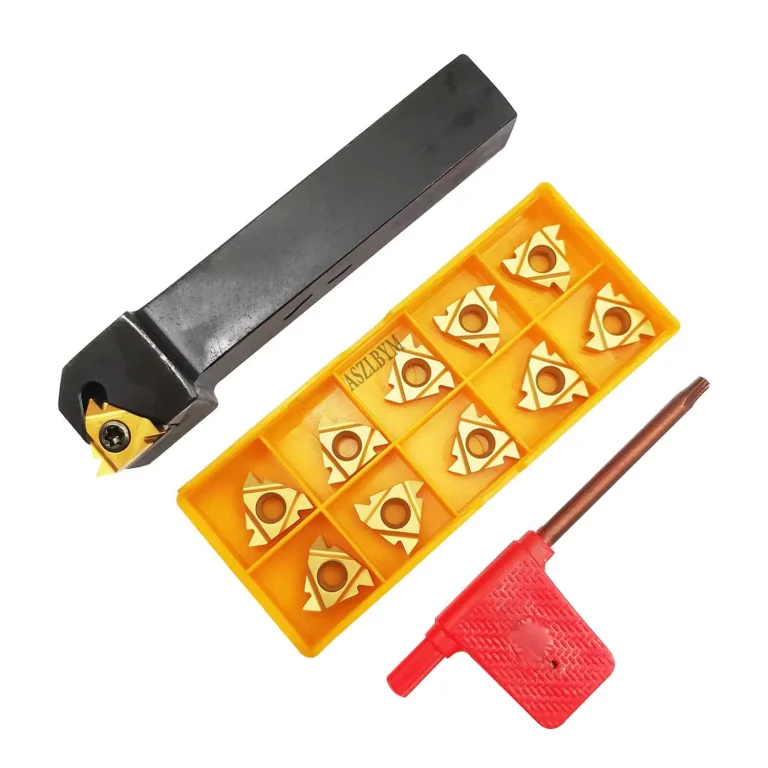Overview of Milling Cutters
Understanding Milling Cutters
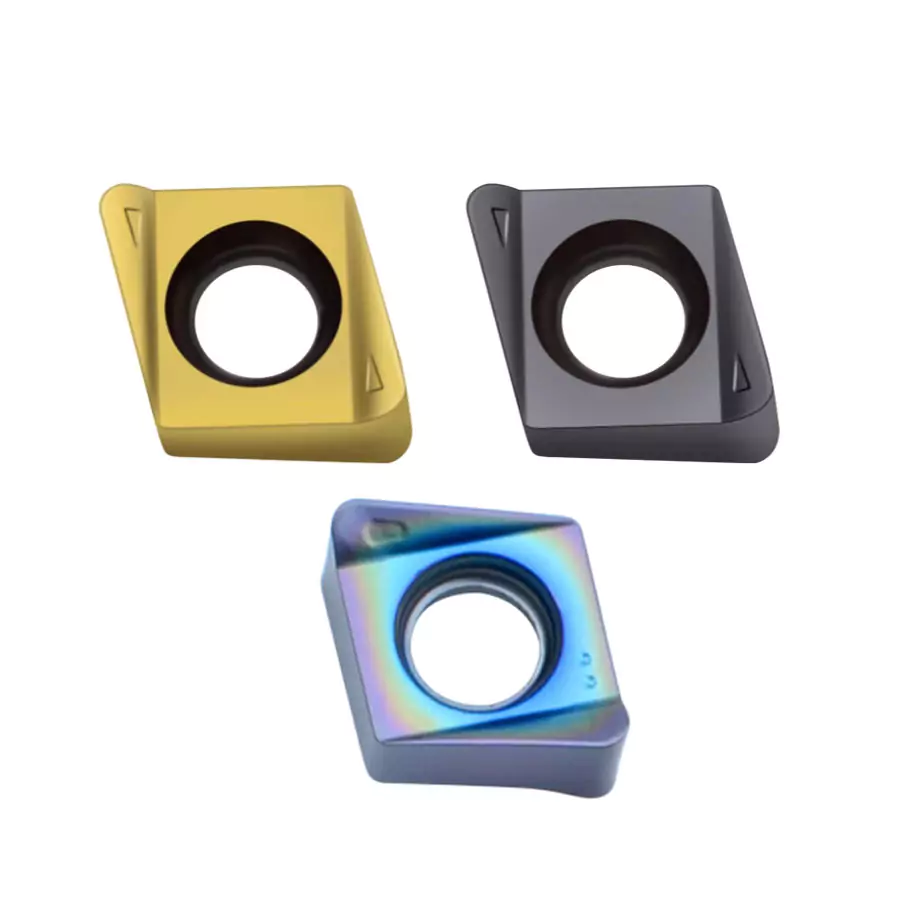
Milling cutters are essential tools used in machining processes to remove material from a workpiece. These cutting instruments are designed with various shapes and sizes to suit different milling operations, making them versatile tools in the manufacturing industry. Used primarily in CNC milling machines, milling cutters come with multiple flutes or cutting edges to enhance their cutting efficiency.
Role in CNC Milling Machines
CNC milling machines rely heavily on milling cutters to achieve precise and intricate cuts in materials such as metal, plastic, and wood. The computerized control allows for accurate and repetitive production, making these machines indispensable in modern manufacturing. Milling cutters make it possible to create complex geometries and achieve high levels of surface finish, which are crucial in the production of automotive parts, aerospace components, and various other intricate designs.
Purpose and Applications
The primary purpose of milling cutters is to facilitate the removal of material from a workpiece to shape and size it according to specific requirements. These tools are widely used in various industrial applications, including the production of gears, the creation of slots, and the surfacing of complex parts. Milling operations such as face milling, end milling, and slot milling require different types of milling cutters to achieve the desired results effectively.
Cylindrical Milling Cutter
Function
The cylindrical milling cutter is primarily used for processing planes on horizontal milling machines. This type of milling cutter is often employed in the creation of flat surfaces and slots. It is designed to perform a range of cutting operations with high efficiency and precision, making it a valuable tool in many machining applications.
Processing Planes on Horizontal Milling Machines
Horizontal milling machines utilize cylindrical milling cutters to create flat surfaces. These cutters rotate horizontally and come into contact with the workpiece to remove material. The process is straightforward yet highly effective for applications requiring flat surfaces, such as the production of parts that need to fit together seamlessly.
Cutter Teeth Distribution
The effectiveness of cylindrical milling cutters largely depends on the distribution of their teeth. Cutter teeth can be distributed in various ways to optimize performance and achieve the desired finish on a workpiece.
Circumferential Distribution
In a cylindrical milling cutter, the teeth are distributed circumferentially around the perimeter. This arrangement allows the cutter to engage with the workpiece continuously during its rotation, ensuring an even and consistent cutting action. Circumferential distribution contributes to the cutter’s ability to remove material efficiently and achieve smooth surfaces.
Types of Teeth
Cylindrical milling cutters can feature different types of teeth, each designed to suit specific cutting requirements.
Straight Teeth
Straight teeth are simple yet effective for general milling operations. They offer easy cutting action and are suitable for machining operations that do not demand high levels of precision. Straight teeth are commonly used in rough cutting applications where material removal is prioritized over the surface finish.
Spiral Teeth
Spiral teeth are designed to provide smooth and continuous cutting action. The spiral design helps reduce vibrations and distribute cutting force evenly, leading to a higher quality finish. This type of tooth is especially useful in operations that require precision and a fine surface finish.
Number of Teeth
The number of teeth on a cylindrical milling cutter can significantly impact its performance and suitability for different machining tasks.
Coarse Teeth
Coarse teeth are characterized by their high tooth strength and large chip space, making them suitable for rough machining.
High Tooth Strength
Coarse teeth offer high tooth strength, enabling them to withstand the stresses associated with heavy cutting loads.
Large Chip Space
The large chip space between coarse teeth allows for effective chip removal, which is crucial during rough machining operations to prevent clogging and overheating.
Suitable for Rough Machining
Given their robust design and efficient chip removal capabilities, coarse teeth are ideal for rough machining tasks where the primary goal is to remove large amounts of material quickly.
Fine Teeth
Fine teeth, on the other hand, are designed for finishing operations, providing a higher quality surface finish.
Suitable for Finishing
Fine teeth are suitable for finishing processes where the emphasis is on achieving a smooth and precise surface. The smaller chip space and finer cutting edges allow for meticulous material removal, resulting in a superior finish.
Face Milling Cutter
Function
Face milling cutters are specifically used for processing planes on vertical, face, and gantry milling machines. These cutters are known for their ability to create very smooth and high-quality finishes on large surface areas. They are particularly effective for machining large workpieces and are often used in the automotive and aerospace industries for this reason.
Processing Planes on Vertical, Face, and Gantry Milling Machines
Face milling cutters are designed to be used with vertical milling machines, face milling machines, and large gantry milling machines. These machines enable the face milling cutter to cut across the surface of the workpiece, creating a smooth and flat plane. This capability is vital for jobs that require a high degree of accuracy and surface quality.
Cutter Teeth Distribution
The tooth distribution on face milling cutters greatly influences their effectiveness in milling processes. These cutters feature teeth located on both the end face and the circumference, optimizing their cutting performance for surface milling tasks.
End Face and Circumference
Face milling cutters have teeth distributed on both the end face and the circumference. This type of tooth arrangement allows the cutter to engage with the material more effectively, reducing cutting forces and enhancing the surface finish. The teeth on the end face help in creating flat surfaces, while the teeth on the circumference contribute to the overall cutting action and chip removal.
Types of Teeth
The types of teeth on face milling cutters determine their suitability for different applications. These cutters can be equipped with coarse teeth or fine teeth depending on the specific requirements of the milling operation.
Coarse Teeth
Coarse teeth on face milling cutters are designed for heavy machining tasks where a large amount of material needs to be removed quickly. These teeth have a more substantial cutting edge and larger chip spaces, which allows for efficient chip evacuation and reduces the risk of cutter clogging.
Fine Teeth
Fine teeth provide a cleaner and smoother finish, making them ideal for finishing operations. They are capable of achieving a high level of precision and surface quality, which is essential when detailed and fine work is required. The smaller chip clearance and finer cutting edges ensure a better surface finish during the machining process.
Structural Types
Face milling cutters come in different structural types, including integral, insert, and indexable types, each with its unique advantages.
Integral Type
Integral face milling cutters are made from a single piece of material and do not have replaceable cutting edges. This type of cutter is typically more rigid and can offer higher precision due to the lack of moving parts. However, once the cutting edges are worn out, the entire cutter must be replaced.
Insert Type
Insert-type face milling cutters use replaceable cutting inserts, allowing for the reuse of the cutter body. These inserts can be changed when they become dull or worn, which makes this cutter type economical in the long run. Additionally, different insert materials can be used for various workpiece materials, enhancing the cutter’s versatility.
Indexable Type
Indexable face milling cutters have multiple cutting inserts that can be rotated or “indexed” to present a fresh cutting edge when one becomes dull. This feature significantly extends the cutter’s lifespan and reduces downtime for tool changes. Indexable cutters are particularly beneficial in high-production environments where maintaining a sharp cutting edge is critical.
End Milling Cutter
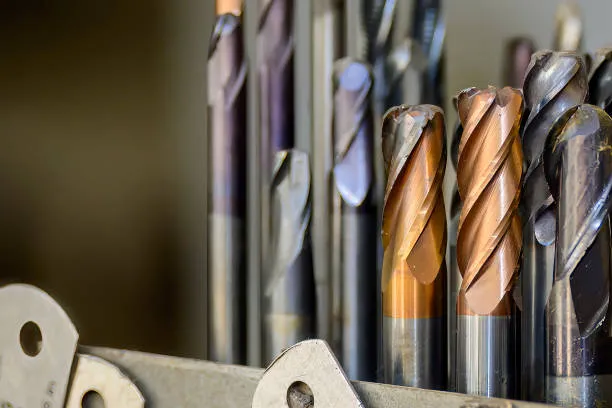
Function
End milling cutters are versatile tools used for processing grooves, step surfaces, and other complex contours. They are indispensable in operations that require precision and detail, such as the creation of intricate shapes and profiles in various materials. End milling is widely used in the production of molds, dies, and components that demand high accuracy.
Processing Grooves and Step Surfaces
End milling cutters excel in creating grooves and step surfaces on a workpiece. Their design allows them to cut into the material with precision, making them ideal for producing detailed features that require meticulous attention. These cutters are commonly used in various industries, including electronics, medical devices, and precision engineering.
Cutter Teeth Distribution
The distribution of teeth on end milling cutters impacts their cutting efficiency and effectiveness. These cutters feature teeth on both the circumference and the end surface.
Circumference and End Surface
End milling cutters have teeth distributed around the circumference and on the end surface. This arrangement allows the cutter to engage with the workpiece from multiple angles, facilitating efficient material removal and providing a high-quality surface finish. The combined action of the circumferential and end teeth ensures smooth cutting and minimizes tool wear.
Axial Feeding
One of the key features of end milling cutters is their ability to perform axial feeding, which is essential for certain milling operations.
End Teeth Passing Through Center
End milling cutters with end teeth that pass through the center can engage in axial feeding. This design allows the cutter to plunge directly into the material, making it possible to create deep grooves, slots, and pockets. The center-cutting capability is crucial for operations that involve vertical feed movements.
Axial Feeding Capability
The axial feeding capability of end milling cutters enhances their versatility and efficiency. It enables the cutter to perform both peripheral and plunge milling, making it suitable for a wide range of applications. The ability to feed axially improves the cutter’s ability to handle complex milling tasks with precision and accuracy.
Three-Sided Edge Milling Cutter
Function
The three-sided edge milling cutter is designed for processing various grooves and stepped surfaces. Its unique configuration allows for effective material removal from both sides and the circumference, making it highly efficient for specific milling operations. This cutter type is often employed in tasks that involve cutting slots or creating detailed profiles.
Processing Various Grooves and Stepped Surfaces
Three-sided edge milling cutters are particularly effective for creating grooves and stepped surfaces on a workpiece. Their design enables them to cut deeply and precisely, making them ideal for applications that require intricate detailing. Industries that require complex shapes and forms, such as automotive and aerospace manufacturing, frequently use these cutters.
Cutter Teeth Distribution
The teeth on three-sided edge milling cutters are strategically distributed to optimize cutting performance.
Teeth on Both Sides and Circumference
Three-sided edge milling cutters have teeth on both sides and around the circumference. This tooth arrangement allows for simultaneous cutting action on multiple planes, enhancing material removal efficiency. The distributed teeth provide stable and consistent cutting, resulting in a high-quality finish and reduced machining time.
Angle Milling Cutter
Function
Angle milling cutters are specialized tools used for milling grooves at specific angles. These cutters are essential for creating features that require precise angular cuts, such as beveled edges and angled slots. Their ability to cut at defined angles makes them invaluable in various machining applications, including tool and die making and general engineering.
Milling Grooves at a Certain Angle
Angle milling cutters are designed to mill grooves at predetermined angles. This capability is critical for producing parts with angled features, which are commonly required in many industrial applications. By enabling precise angular cuts, angle milling cutters help achieve the desired geometric configurations on workpieces.
Types of Angle Cutters
Angle milling cutters come in different types, each suited for specific angular milling tasks.
Single-Angle Cutters
Single-angle cutters are designed to cut grooves at a single, specific angle. These cutters are typically used for creating chamfers and bevels on the edges of workpieces. Their simple design and focused functionality make them ideal for applications that require consistent angular cuts.
Double-Angle Cutters
Double-angle cutters have cutting edges at two different angles. This design allows them to produce more complex angular features, such as V-shaped grooves and notches. Double-angle cutters are versatile and can handle a variety of angular milling operations, making them useful for more intricate machining tasks.
Saw Blade Milling Cutter
Function
Saw blade milling cutters are used for processing deep grooves and cutting off workpieces. These cutters are similar in appearance to circular saw blades and are designed to handle high-depth cutting operations. They are commonly used in applications that require the separation of material or the creation of deep, narrow grooves.
Processing Deep Grooves and Cutting Off Workpieces
Saw blade milling cutters excel in cutting deep grooves and segmenting workpieces. Their thin profile and sharp teeth make them highly effective for operations that involve deep cuts. These cutters are frequently used in industries where precision cutting and material separation are essential, such as metalworking and woodworking.
Cutter Teeth Distribution
The distribution of teeth on saw blade milling cutters is a key factor in their cutting performance.
More Teeth on Circumference
Saw blade milling cutters have a high number of teeth distributed around the circumference. This tooth arrangement allows for smooth and continuous cutting action, reducing the cutting load on each tooth and minimizing tool wear. The numerous teeth provide a cleaner cut and enhance the cutter’s ability to produce high-quality grooves and cuts.
Secondary Deflection Angles
The secondary deflection angles on saw blade milling cutters help reduce friction and improve cutting efficiency.
15’~1° Angles to Reduce Friction
The secondary deflection angles on saw blade milling cutters, typically ranging from 15’ to 1°, are designed to reduce friction between the cutter and the workpiece. This reduction in friction minimizes heat generation and wear on the cutter, leading to longer tool life and more efficient cutting performance. The optimized angles ensure smooth and precise cuts, even in deep cutting operations.
Other Types of Milling Cutters
In addition to the commonly used milling cutters, there are several other specialized types designed for specific milling tasks.
Keyway Milling Cutters
Keyway milling cutters are used to create keyways or slots in shafts and other rotating components. These slots are essential for transmitting torque and securing components in mechanical assemblies. Keyway cutters are designed to produce precise and accurately aligned keyways, ensuring the proper fit and function of mechanical parts.
Dovetail Milling Cutters
Dovetail milling cutters are used to create dovetail slots and joints, which are widely used in woodworking and metalworking applications. Dovetail joints provide strong and durable connections, making them ideal for high-stress assemblies. Dovetail cutters are designed to produce the specific angled cuts required for these joints, ensuring a precise fit and robust connection.
T-Slot Milling Cutters
T-slot milling cutters are employed to create T-slots in machine tool tables and other components. These slots allow for the secure mounting of workpieces and fixtures, enabling flexible and efficient machining operations. T-slot cutters are designed to produce the unique T-shaped profile with precision, ensuring a stable and secure fit.
Forming Milling Cutters
Forming milling cutters are specialized tools used to create complex shapes and profiles on a workpiece. These cutters are custom-designed to match the specific contour or geometry required for the finished part. Forming cutters are often used in the production of gears, cams, and other precision components where detailed and accurate shaping is essential.
T-Shaped Milling Cutter
Function
T-shaped milling cutters are designed for milling T-shaped slots, which are commonly used in manufacturing and machining operations to secure workpieces and fixtures. These cutters are essential for creating the specific profile of T-slots, ensuring a precise and accurate fit.
Milling T-Shaped Slots
T-shaped milling cutters are used to mill T-shaped slots with precision. These slots are crucial for mounting and securing components in various machine tools and fixtures. T-shaped cutters are designed to produce the unique T-profile required for these slots, ensuring they provide a secure and stable connection. This capability makes them indispensable in the setup and operation of many machining processes.
